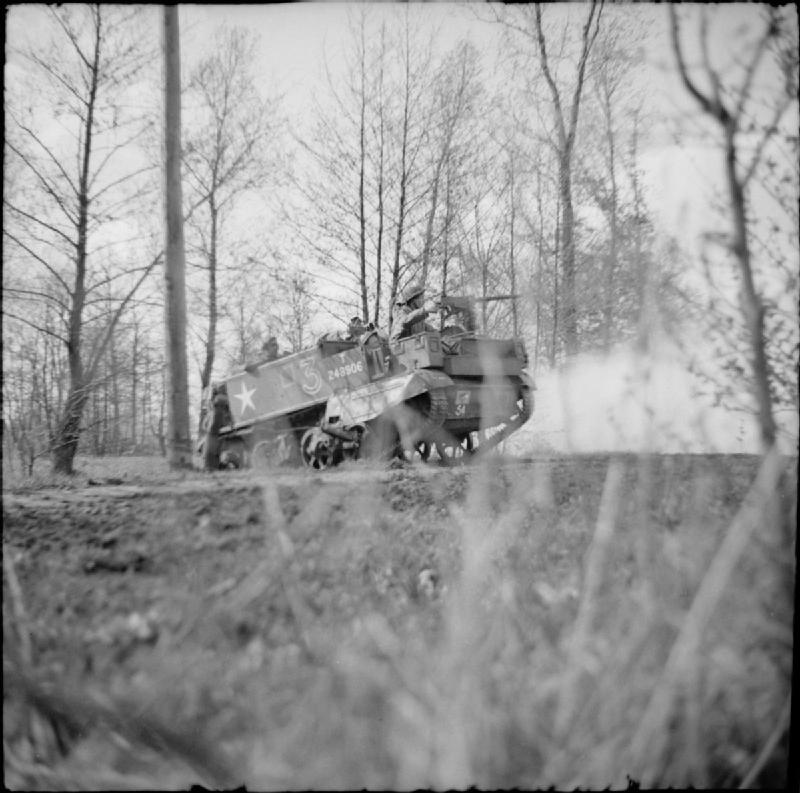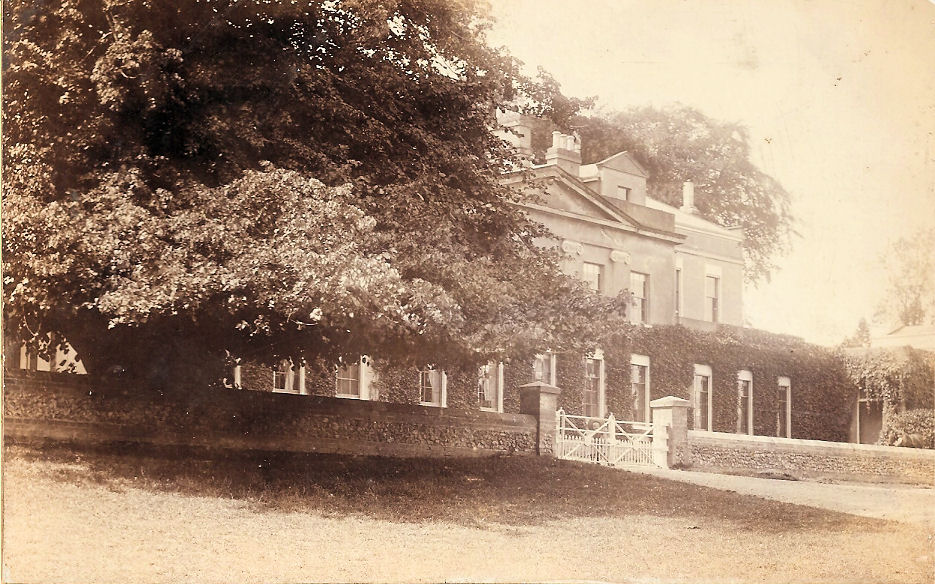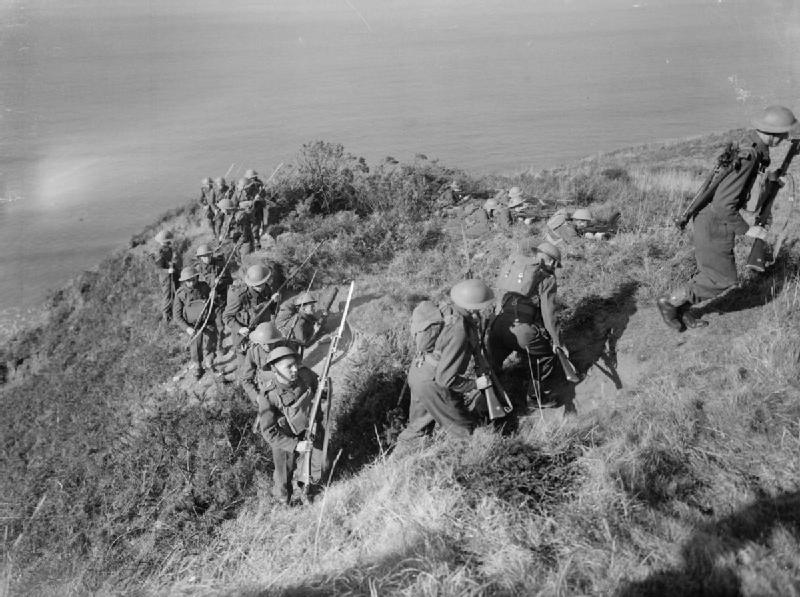|
Queen's Westminsters
The Queen's Westminsters were an infantry regiment of the Territorial Army, part of the British Army. Originally formed from Rifle Volunteer Corps, which were established after a French invasion scare of 1859. The unit became part of the newly established London Regiment on the formation of the Territorial Force in 1908. It was subsequently amalgamated in 1921 with the Civil Service Rifles, and became a territorial Battalion of the King's Royal Rifle Corps in 1937. It ceased to exist as separate entity after it was amalgamated in 1961. History Rifle Volunteers The regiment was founded on the formation of the Volunteer Force, raised by the Duke of Westminster and named in honour of Queen Victoria in 1860. Initially it was known as the Pimlico Rifle Volunteer Corps. A year later it amalgamated with the Westminster Rifle Volunteers and became known as the Queen's Westminsters. In 1880 most London volunteer units were re-numbered. As a result the unit became the 13th Middlesex (Q ... [...More Info...] [...Related Items...] OR: [Wikipedia] [Google] [Baidu] |
Flag Of The British Army
A flag is a piece of textile, fabric (most often rectangular) with distinctive colours and design. It is used as a symbol, a signalling device, or for decoration. The term ''flag'' is also used to refer to the graphic design employed, and flags have evolved into a general tool for rudimentary signalling and identification, especially in environments where communication is challenging (such as the Maritime flag, maritime environment, where Flag semaphore, semaphore is used). Many flags fall into groups of similar designs called flag families. The study of flags is known as "vexillology" from the Latin , meaning "flag" or "banner". National flags are patriotic symbols with widely varied interpretations that often include strong military associations because of their original and ongoing use for that purpose. Flags are also used in messaging, advertising, or for decorative purposes. Some military units are called "flags" after their use of flags. A ''flag'' (Arabic: ) is equival ... [...More Info...] [...Related Items...] OR: [Wikipedia] [Google] [Baidu] |
Volunteer Force (Great Britain)
The Volunteer Force was a citizen army of part-time rifle, artillery and engineer corps, created as a Social movement, popular movement throughout the British Empire in 1859. Originally highly autonomous, the units of volunteers became increasingly integrated with the British Army after the Childers Reforms in 1881, before forming part of the Territorial Force in 1908. Most of the regiments of the present Army Reserve (United Kingdom), Army Reserves Infantry of the British Army, Infantry, Royal Artillery, Artillery, Royal Engineers, Engineers and Royal Corps of Signals, Signals units are directly descended from Volunteer Force units. The British Army following the Crimean War Prior to the Crimean War, the British military (i.e., ''land forces'') was made up of multiple separate forces, with a basic division into the ''Regular Forces'' (including the British Army, composed primarily of cavalry and infantry, and the ''Ordnance Military Corps'' of the Board of Ordnance, made u ... [...More Info...] [...Related Items...] OR: [Wikipedia] [Google] [Baidu] |
Le Havre
Le Havre is a major port city in the Seine-Maritime department in the Normandy (administrative region), Normandy region of northern France. It is situated on the right bank of the estuary of the Seine, river Seine on the English Channel, Channel southwest of the Pays de Caux, very close to the Prime Meridian (Greenwich), Prime Meridian. Le Havre is the most populous commune of Upper Normandy, although the total population of the greater Le Havre conurbation is smaller than that of Rouen. It is also the second largest subprefecture in France, after only Reims. The name ''Le Havre'' means "the harbour" or "the port". Its inhabitants are known as ''Havrais'' or ''Havraises''. The city and Port of Le Havre, port were founded by Francis I of France, King Francis I in 1517. Economic development in the early modern period was hampered by European wars of religion, religious wars, conflicts with the English, epidemics, and storms. It was from the end of the 18th century that Le Havre st ... [...More Info...] [...Related Items...] OR: [Wikipedia] [Google] [Baidu] |
Hemel Hempstead
Hemel Hempstead () is a town in the Dacorum district in Hertfordshire, England. It is located north-west of London; nearby towns and cities include Watford, St Albans and Berkhamsted. The population at the 2021 United Kingdom census, 2021 census was 95,961. Hemel Hempstead has existed since at least the 8th century and was granted its Royal charter, town charter by Henry VIII in 1539. However, it has expanded and developed in recent decades after being designated as a New towns in the United Kingdom, new town after the end of the Second World War. History Origin of the name The Human settlement, settlement was called Henamsted or Hean-Hempsted in Anglo-Saxon times and Hemel-Amstede by the time of William the Conqueror. The name is referred to in the Domesday Book as Hamelamestede, but in later centuries it became Hamelhamsted, and, possibly, Hemlamstede. In Old English, ''-stead'' or ''-stede'' simply meant "place" (reflected in German ''Stadt'' and Dutch ''stede'' or ''sta ... [...More Info...] [...Related Items...] OR: [Wikipedia] [Google] [Baidu] |
47th (1/2nd London) Division
The 47th (1/2nd London) Division was an infantry division of the British Army, raised in 1908 as part of the Territorial Force. Formation The Territorial Force (TF) was formed on 1 April 1908 following the enactment of the Territorial and Reserve Forces Act 1907 (7 Edw.7, c.9) which combined and re-organised the old Volunteer Force, the Honourable Artillery Company and the Yeomanry. On formation, the TF contained 14 infantry divisions and 14 mounted yeomanry brigades. One of the divisions was the 2nd London Division. In peacetime, the divisional headquarters was, from 1912, in the Duke of York's Headquarters. First World War The 2nd London Division was designated the 47th Division in 1915, during the Great War, and referred to as the "1/2nd London Division" after the raising of the second-line 60th (2/2nd London) Division. After undergoing a period of training, the division was sent to France in March 1915, the second complete Territorial division (after the 46th (North Mi ... [...More Info...] [...Related Items...] OR: [Wikipedia] [Google] [Baidu] |
140th (4th London) Brigade
The 140th (4th London) Brigade was an infantry brigade formation of the British Army's Territorial Army (TA) that had its origins in a South London Brigade (known as the 'Grey Brigade') of the former Volunteer Force. It served on the Western Front in the First World War and was recreated during the Second World War where it served only in the United Kingdom as a training formation. Origin: 'The Grey Brigade' An invasion scare in 1859 led to the creation of the Volunteer Force and huge enthusiasm for joining local Rifle Volunteer Corps (RVCs).Beckett. There were a large number of these units in and around London, and the opportunity was taken to group them together for Easter training under the temporary command of officers of the Brigade of Guards stationed in the capital. Initially they were brigaded by the colour of their uniforms – scarlet, Rifle green or grey, the latter being a popular colour for RVCs in the 1860s.Bailey & Hollier, pp. 4 & 382.Anon, ''Civil Service Rifles' ... [...More Info...] [...Related Items...] OR: [Wikipedia] [Google] [Baidu] |
World War I
World War I or the First World War (28 July 1914 – 11 November 1918), also known as the Great War, was a World war, global conflict between two coalitions: the Allies of World War I, Allies (or Entente) and the Central Powers. Fighting took place mainly in European theatre of World War I, Europe and the Middle Eastern theatre of World War I, Middle East, as well as in parts of African theatre of World War I, Africa and the Asian and Pacific theatre of World War I, Asia-Pacific, and in Europe was characterised by trench warfare; the widespread use of Artillery of World War I, artillery, machine guns, and Chemical weapons in World War I, chemical weapons (gas); and the introductions of Tanks in World War I, tanks and Aviation in World War I, aircraft. World War I was one of the List of wars by death toll, deadliest conflicts in history, resulting in an estimated World War I casualties, 10 million military dead and more than 20 million wounded, plus some 10 million civilian de ... [...More Info...] [...Related Items...] OR: [Wikipedia] [Google] [Baidu] |
Haldane Reforms
The Haldane Reforms were a series of far-ranging reforms of the British Army made from 1906 to 1912, and named after the Secretary of State for War, Richard Burdon Haldane. They were the first major reforms since the " Childers Reforms" of the early 1880s, and were made in the light of lessons newly learned in the Second Boer War. The major element of the reforms was the creation of an expeditionary force, specifically prepared and trained for intervening in a major war. This had existed before, but it had not been well-prepared for overseas service; the newly organised force was to have a permanent peacetime organisation and a full complement of supporting troops. At the same time, the reserve forces were restructured and expanded so as to ensure that overseas forces could be expanded, supplied with new recruits and to provide for home defence. The Volunteer Force and the Yeomanry were reorganised into a new Territorial Force and the Militia was formed into the Special Reserve ... [...More Info...] [...Related Items...] OR: [Wikipedia] [Google] [Baidu] |
Queen Victoria
Victoria (Alexandrina Victoria; 24 May 1819 – 22 January 1901) was Queen of the United Kingdom of Great Britain and Ireland from 20 June 1837 until Death and state funeral of Queen Victoria, her death in January 1901. Her reign of 63 years and 216 days, which was List of monarchs in Britain by length of reign, longer than those of any of her predecessors, constituted the Victorian era. It was a period of industrial, political, scientific, and military change within the United Kingdom of Great Britain and Ireland, United Kingdom, and was marked by a great expansion of the British Empire. In 1876, the British parliament voted to grant her the additional title of Empress of India. Victoria was the daughter of Prince Edward, Duke of Kent and Strathearn (the fourth son of King George III), and Princess Victoria of Saxe-Coburg-Saalfeld. After the deaths of her father and grandfather in 1820, she was Kensington System, raised under close supervision by her mother and her Comptrol ... [...More Info...] [...Related Items...] OR: [Wikipedia] [Google] [Baidu] |
Volunteer Force (Great Britain)
The Volunteer Force was a citizen army of part-time rifle, artillery and engineer corps, created as a Social movement, popular movement throughout the British Empire in 1859. Originally highly autonomous, the units of volunteers became increasingly integrated with the British Army after the Childers Reforms in 1881, before forming part of the Territorial Force in 1908. Most of the regiments of the present Army Reserve (United Kingdom), Army Reserves Infantry of the British Army, Infantry, Royal Artillery, Artillery, Royal Engineers, Engineers and Royal Corps of Signals, Signals units are directly descended from Volunteer Force units. The British Army following the Crimean War Prior to the Crimean War, the British military (i.e., ''land forces'') was made up of multiple separate forces, with a basic division into the ''Regular Forces'' (including the British Army, composed primarily of cavalry and infantry, and the ''Ordnance Military Corps'' of the Board of Ordnance, made u ... [...More Info...] [...Related Items...] OR: [Wikipedia] [Google] [Baidu] |
Cooper King2
Cooper, Cooper's, Coopers and similar may refer to: * Cooper (profession), a maker of wooden casks and other staved vessels Arts and entertainment * Cooper (producers), an alias of Dutch producers Klubbheads * "Cooper", a song by Roxette from the 1999 album '' Have a Nice Day'' * Cooper Prize, an international playwriting prize based in Melbourne, Australia, since 2024 Businesses and organisations * Cooper (company), an American user experience design and business strategy consulting firm * Cooper (motorcycles), an American brand of motorcycles * Cooper Canada, a defunct sporting goods manufacturer * Cooper Car Company, a British car company **Mini Cooper, the name of several cars * Cooper Chemical Company, an American chemical manufacturer * The Cooper Companies, an American medical device company * Cooper Do-nuts, Los Angeles cafe which was the site of alleged uprising in reaction to police harassment of LGBT people * Cooper Enterprises, a Canadian boat builder ** C ... [...More Info...] [...Related Items...] OR: [Wikipedia] [Google] [Baidu] |






